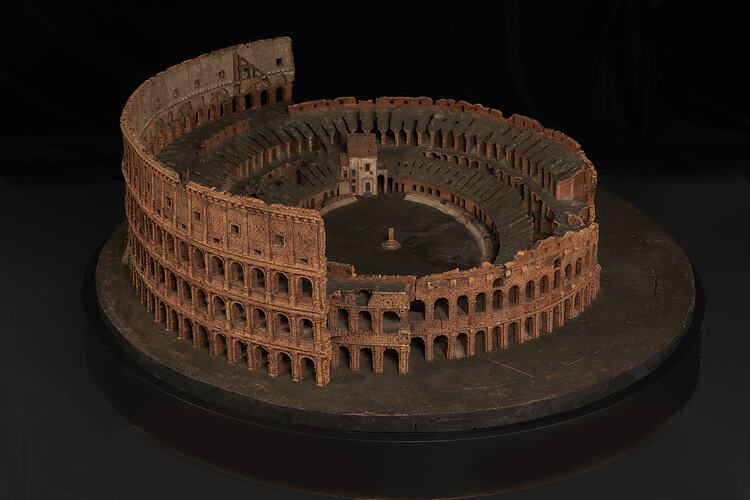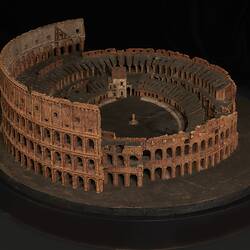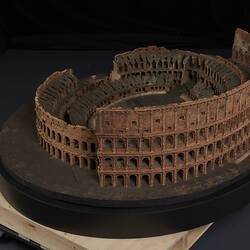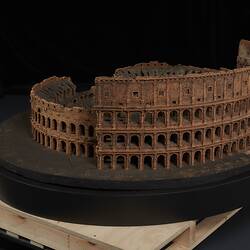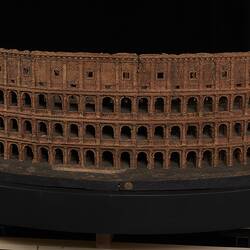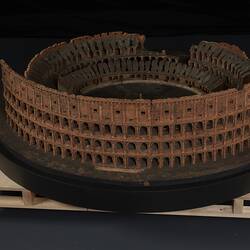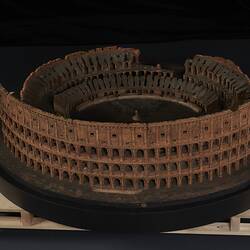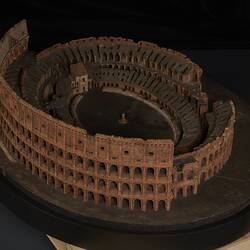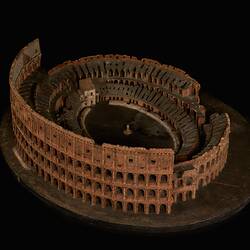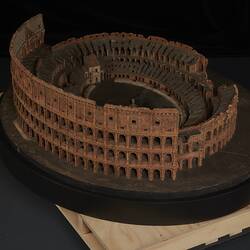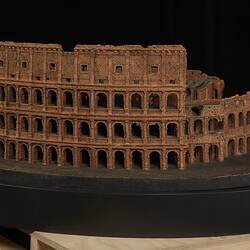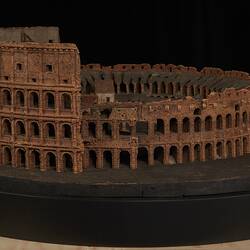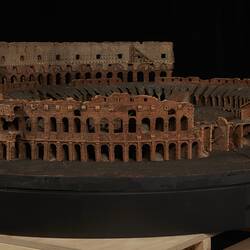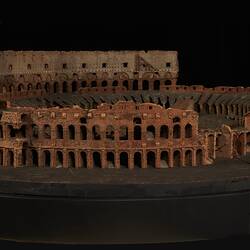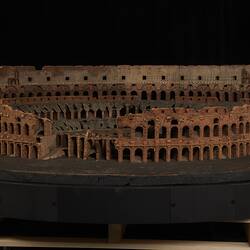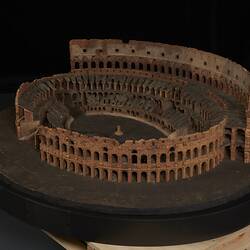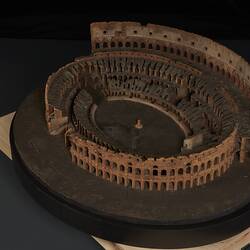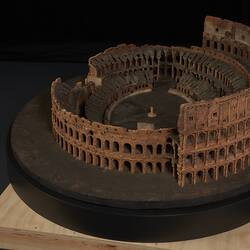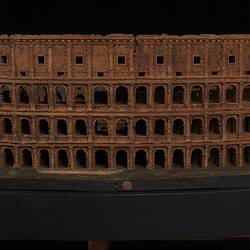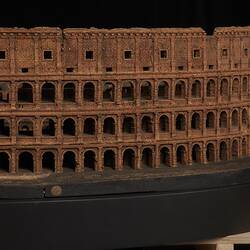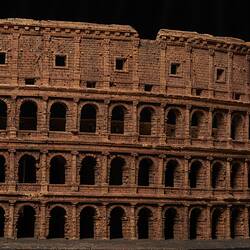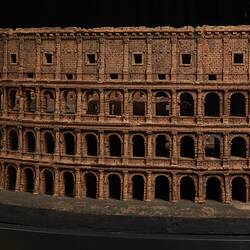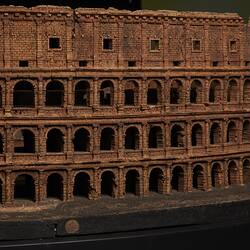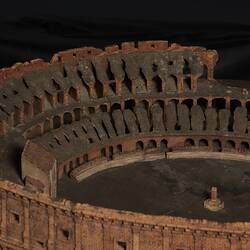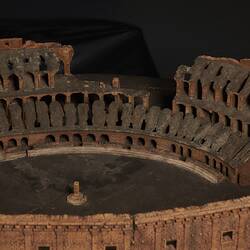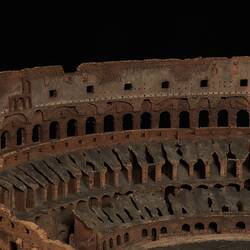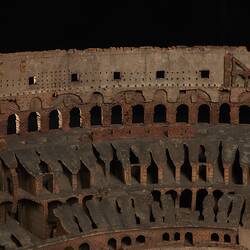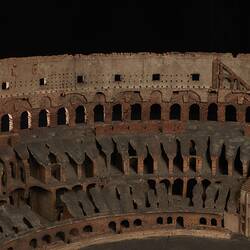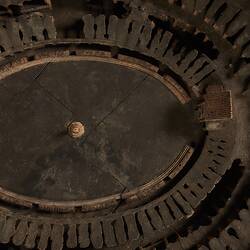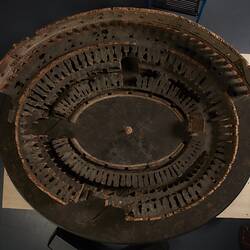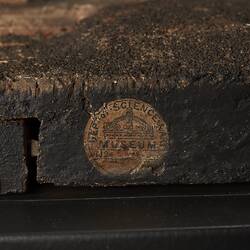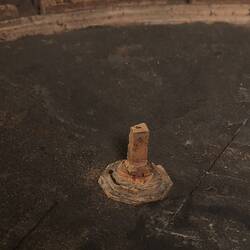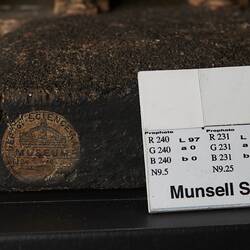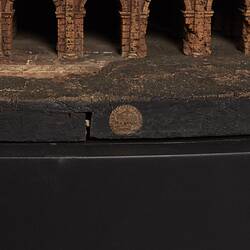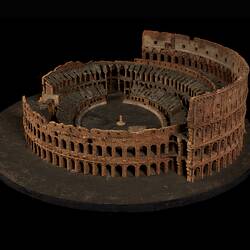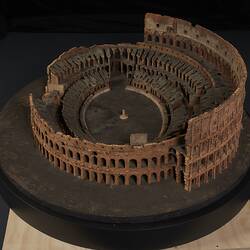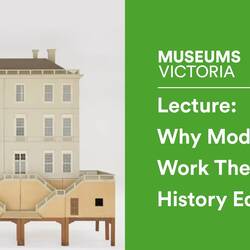Summary
Cork model of the Colosseum in Rome, made by Richard Du Bourg or Dubourg, London, circa 1775.
English artist Richard Du Bourg (1738-1826) learned the emerging technique of cork modelling of classical sites while living in Italy in the 1760s. He first displayed a model of the Colosseum at the Society of Artists exhibition in London in 1775, and then at his own 'Classical Exhibition' at various locations in London from 1775-1785. Although much of his collection was destroyed by a fire in 1785, it seems likely that his Colosseum model survived, and that this is the original model of 1775.
Du Bourg re-established his exhibition in 1799 and it continued at his residence at 68 Lower Grosvenor Street until 1819. Newspaper advertisements and accounts by visitors indicate that the Colosseum model was on display from 1814 until 1819. Du Bourg auctioned his collection in 1819 to raise funds for his old age, and the Colosseum model is handwritten in the surviving auction catalogue.
The history of the model is undocumented between 1819 and1859, when it was donated to the South Kensington Museum, London by Captain Thomas Leyland, along with six cork models of temples in southern Italy (not by Du Bourg). The model was displayed in the Ornamental section and then the Structural section of the museum, remaining with the Science Museum when the Science Museum and V&A Museum were formally separated in 1909. The model was transferred in 1929 to the Industrial and Technological Museum, Melbourne, now part of Museums Victoria.
Physical Description
Cork model on timber base, with painted plaster and sand landscaping.
Significance
Statement of significance
This cork model of the Colosseum in Rome, made by Richard Du Bourg around 1775, is a rare surviving architectural model of a classical structure, of a type that were popular in the late 18th and early 19th centuries. Cork was a particularly suitable material for capturing the decayed character of classical architecture; the modellers augmented the cork with plaster and sand for the landscape and moss for vegetation.
The technique of modelling classical buildings in cork was developed in Rome in the late1760s, prompted to a considerable extent by the interest of British Grand Tourists, who commissioned models from local artists. Several wealthy British collectors acquired models, including John Stuart, Lord Bute for his personal collection and for the royal collection of George III. Extensive collections were created in several European court collections.
Interest in Britain in cork models of classical sites declined through the second half of the 19th century, and many models in private collections were donated to institutions. Models in public collections also fell into disfavour, and they too were transferred or discarded. A notable exception is Sir John Soane's collection of cork models, purchased in the early decades of the 19th century and exhibited in his Model Room; this collection has survived in Sir John Soane's Museum.
This model of the Colosseum is the only known survivor of the more than forty models that Du Bourg built and displayed in his exhibitions between 1775 and 1819.
More Information
-
Collecting Areas
-
Acquisition Information
Donation from South Kensington Museum (The Science Museum), 1929
-
Maker
Richard Du Bourg, London, England, Great Britain, circa 1775
-
Exhibitor
-
Previous Collection
South Kensington Museum (The Science Museum), London, England, Great Britain, 1859-1929
-
Classification
-
Category
-
Discipline
-
Type of item
-
Overall Dimensions
1695 mm (Length), 1435 mm (Width), 417 mm (Height)
Dimensions include base.
-
Overall Dimensions
1495 mm (Length), 1150 mm (Width), 367 mm (Height)
Model only (not including the base)
-
References
[Article - Journal] Gillespie, Richard. 2017. Richard Du Bourg's Classical Exhibition, 1775-1819. Journal of the History of Collections. 29
[Article - Journal] Gillespie, Richard. 2017. The Rise and Fall of Cork Model Collections in Britain. Architectural History. 60
[Article - Journal] Leslie, Fiona. 2004. Inside Outside: Changing Attitudes Towards Architectural Models in the Museums at South Kensington. Architectural History. 47
[Article - Journal] Anderson, R. G. 1995. Connoisseurship, Pedagogy or Antiquarianism? What Were Instruments Doing in Nineteenth-Century National Collections in Great Britain?. Journal of the History of Collections. 7
[Book] Altick, Richard D. 1978. The Shows of London: A Panoramic History of Exhhibitions, 1600-1862.
-
Keywords
Architectural Models, Monuments, Public Institutions, Tourism, Models & Modelmaking, Modelmaking
